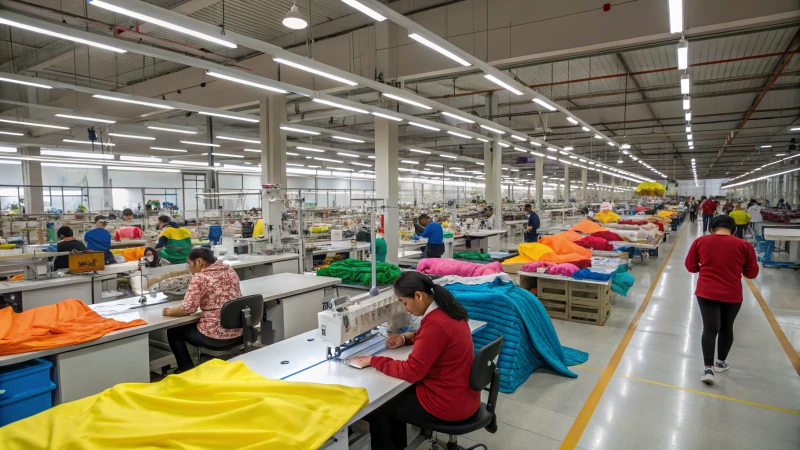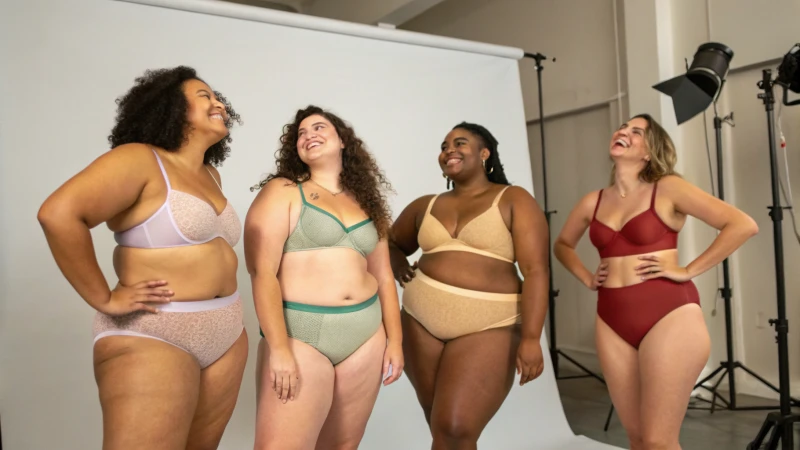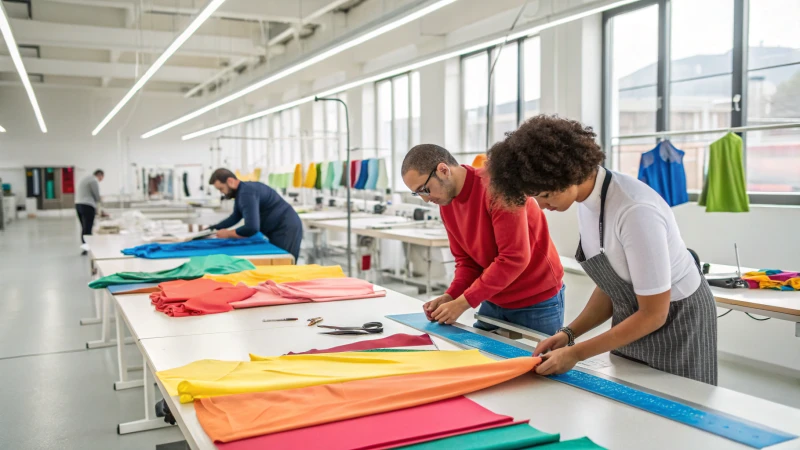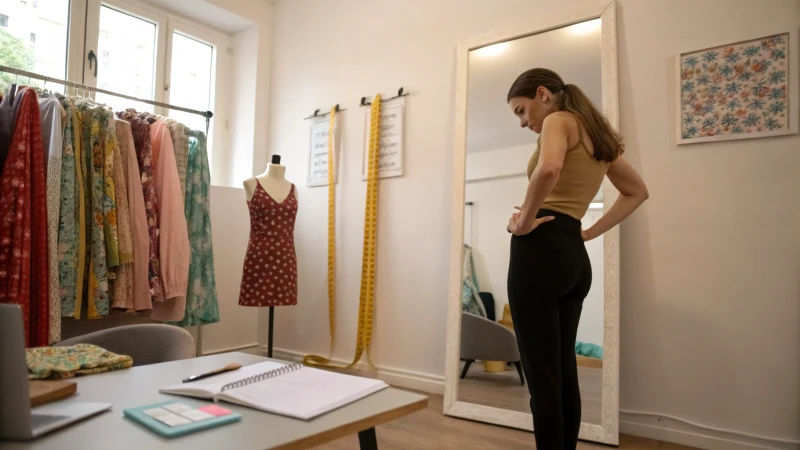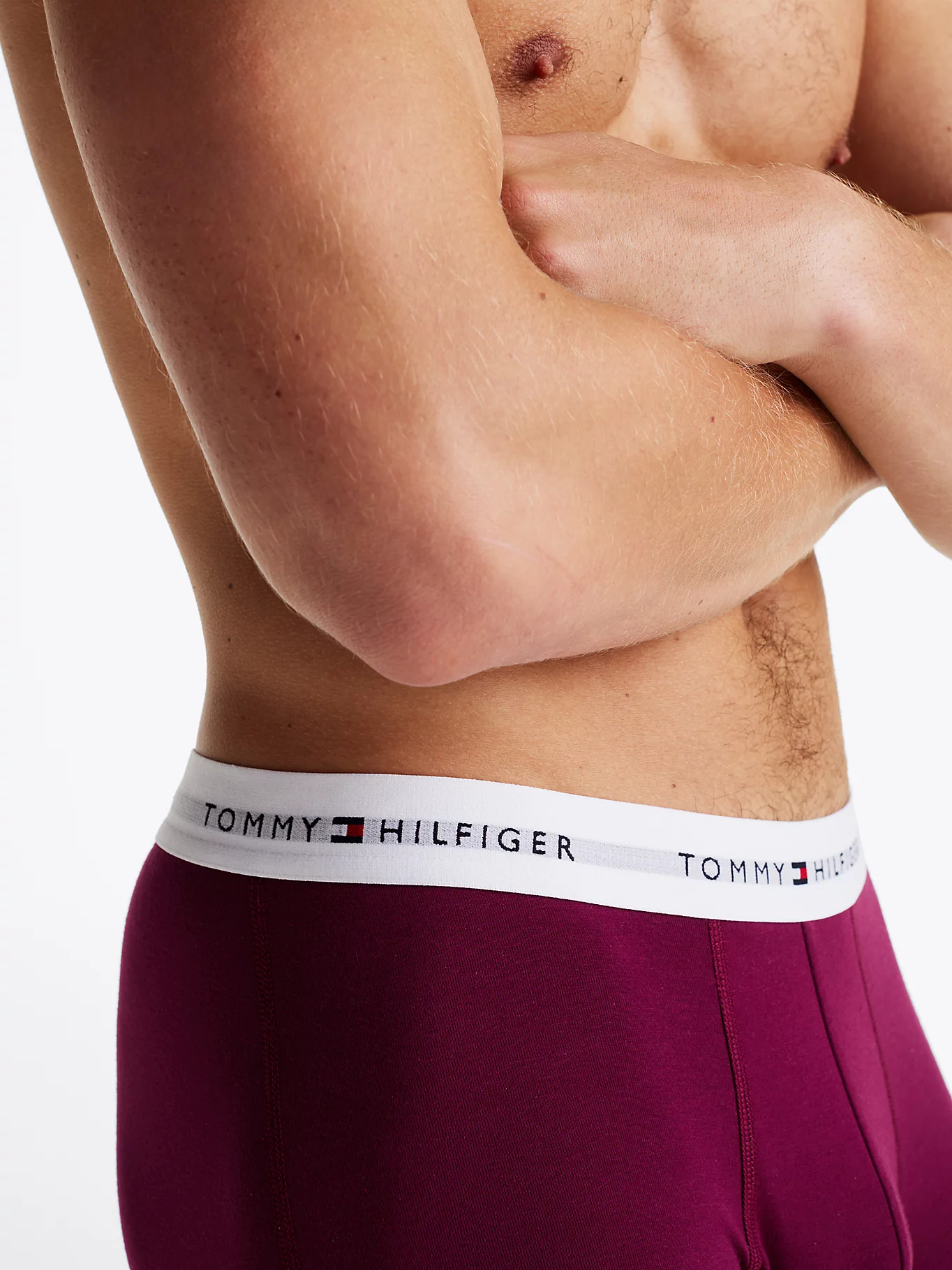
Tommy Hilfiger isn't just a name in fashion; it's a badge of style that speaks volumes about quality and design. But do you know the story behind where these clothes come from?
Tommy Hilfiger clothes are manufactured in various countries worldwide, including China, India, Bangladesh, Vietnam, Turkey, Mexico, and Italy. These locations are chosen for their ability to meet global demand efficiently while maintaining quality and cost-effectiveness.
But hold on! Understanding where these clothes are made is just the beginning. Let's dive deeper into the fascinating world of manufacturing processes, ethical practices, and sustainability efforts that truly define Tommy Hilfiger’s commitment to quality.
Tommy Hilfiger clothes are only made in the USA.False
Tommy Hilfiger manufactures globally, including China, India, and Vietnam.
What Are the Key Manufacturing Processes for Tommy Hilfiger Clothing?
Explore the meticulous manufacturing processes behind Tommy Hilfiger's renowned clothing line.
Tommy Hilfiger's manufacturing processes involve cutting, sewing, finishing, and quality control. These processes are executed in global factories, ensuring efficient production while upholding the brand's quality standards.

Cutting and Pattern Making
The first crucial step in manufacturing Tommy Hilfiger clothing is cutting and pattern making. This involves creating precise patterns that serve as templates for cutting fabric. Advanced computer-aided design software1 is often employed to ensure accuracy and minimize material waste. Factories in China and Turkey excel in this stage due to their expertise and technological advancements.
Sewing and Assembly
Once the fabric is cut, it proceeds to the sewing phase. This step is where individual pieces are stitched together to form complete garments. Facilities in Bangladesh and Vietnam are key players in this process, leveraging their skilled workforce to handle intricate sewing tasks efficiently. This step also incorporates quality checks to identify any immediate defects.
Finishing and Quality Control
Finishing involves adding details like buttons, zippers, and labels. Mexican factories are known for quick turnarounds in this area due to their proximity to the U.S. market. Quality control is paramount at this stage, ensuring each item meets Tommy Hilfiger's standards before reaching consumers. Techniques such as 3D scanning technology2 are sometimes used to verify garment specifications.
Packaging and Distribution
Finally, garments are packaged for distribution. Italian facilities focus on packaging luxury items with a keen eye on presentation. Proper packaging ensures that products maintain their quality during transit. Distribution channels are strategically managed to facilitate timely delivery across global markets, highlighting the brand's commitment to efficiency.
Tommy Hilfiger's manufacturing processes are a testament to their dedication to quality and efficiency. By leveraging global expertise, they maintain a strong presence in the fashion industry.
Tommy Hilfiger uses CAD software for cutting fabric patterns.True
CAD software ensures precision and reduces material waste in pattern cutting.
Mexican factories handle all sewing tasks for Tommy Hilfiger.False
Sewing is primarily done in Bangladesh and Vietnam, not Mexico.
How Does Tommy Hilfiger Ensure Ethical Production Practices?
Tommy Hilfiger, a leading fashion brand, prioritizes ethical production to maintain its reputation and social responsibility.
Tommy Hilfiger ensures ethical production by adhering to strict labor standards, sustainable sourcing, and regular audits across its global supply chain.

Commitment to Fair Labor Practices
Tommy Hilfiger is committed to fair labor practices across its extensive global supply chain. The brand strictly adheres to labor laws and regulations, ensuring safe working conditions, reasonable working hours, and fair wages for its workers. They have implemented a Code of Conduct3 that all suppliers must follow. This code is based on the International Labour Organization (ILO) standards, which include prohibitions on child labor, forced labor, and discrimination.
Sustainable Sourcing
The brand has made significant strides in sustainable sourcing by using environmentally friendly materials and reducing resource consumption. Tommy Hilfiger has launched initiatives to source organic cotton and recycled materials. For example, their 'Make it Possible' campaign aims for all cotton used in their products to be sustainably sourced by 2025.
Regular Audits and Transparency
To ensure compliance with ethical standards, Tommy Hilfiger conducts regular audits of their manufacturing facilities. These audits are designed to assess working conditions, health and safety standards, and adherence to the company's Code of Conduct. The brand publishes its audit results and sustainability reports to maintain transparency with consumers.
Collaboration with Non-Profit Organizations
Tommy Hilfiger collaborates with various non-profit organizations to promote ethical production practices. Partnerships with groups like the Better Cotton Initiative and the Fair Labor Association help reinforce the brand's commitment to social responsibility. These collaborations provide guidance and support for continuous improvement in labor practices and sustainability.
Challenges and Future Goals
Despite these efforts, challenges remain in achieving 100% ethical production due to the complexity of global supply chains. However, Tommy Hilfiger is focused on continuous improvement. Their future goals include enhancing worker empowerment through training programs and increasing the use of renewable energy in production processes.
By integrating these practices into their operations, Tommy Hilfiger not only enhances its brand image but also contributes positively to global ethical standards.
Tommy Hilfiger uses 100% organic cotton in all products.False
The brand aims for sustainable sourcing by 2025, not currently 100%.
Tommy Hilfiger collaborates with the Fair Labor Association.True
The brand partners with FLA to reinforce ethical production practices.
Are Tommy Hilfiger Clothes Sustainable?
Tommy Hilfiger has made strides toward sustainability, but how eco-friendly are their clothes really?
Tommy Hilfiger is committed to sustainability through initiatives like using organic cotton, recycling materials, and promoting ethical labor practices. However, the brand continues to face challenges in achieving full transparency across its supply chain.
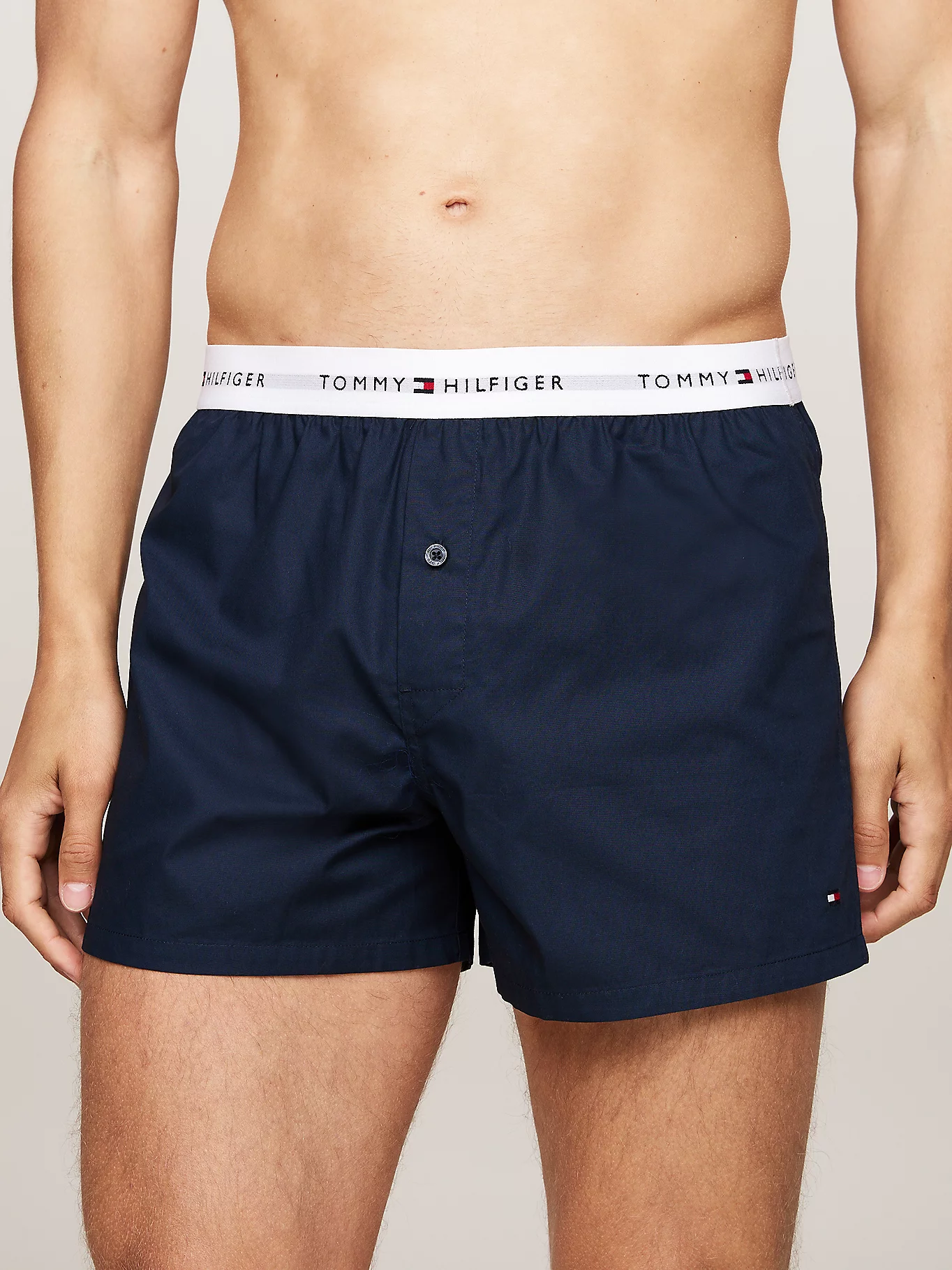
Tommy Hilfiger's Sustainability Initiatives
Tommy Hilfiger has been proactive in integrating sustainable practices4 into its operations. The brand has launched several initiatives to minimize environmental impact, such as using organic and recycled materials. For instance, their 'Make it Possible' strategy aims to create a fully circular fashion ecosystem by 2030. This means all products should be part of a loop where nothing goes to waste.
Ethical Labor and Production
The brand emphasizes ethical labor practices as part of its sustainability efforts. They work closely with suppliers to ensure fair wages and safe working conditions. Tommy Hilfiger is part of the Fair Labor Association, which regularly audits factories for compliance.
Challenges in Supply Chain Transparency
Despite these efforts, Tommy Hilfiger faces challenges in achieving complete transparency. Like many global brands, they struggle with monitoring every aspect of their extensive supply chain, which spans multiple countries and factories. This complexity can lead to gaps in ensuring all partners adhere to the same sustainable practices.
Consumer Role in Sustainability
Consumers also play a crucial role in driving sustainability. By choosing brands committed to ethical practices, customers can influence companies to maintain their green initiatives. Understanding labels and certifications can help consumers make informed decisions about their purchases.
Future Goals
Looking ahead, Tommy Hilfiger aims to expand its use of sustainable materials and improve supply chain transparency further. The brand's commitment to continuous improvement signals a positive shift towards more sustainable fashion, but there's still a long way to go to meet all sustainability goals.
The brand's journey reflects the broader challenges faced by the fashion industry in balancing style with sustainability. While progress is evident, ongoing efforts are essential for truly sustainable fashion.
Tommy Hilfiger uses only organic cotton.False
Tommy Hilfiger uses organic cotton but not exclusively.
Tommy Hilfiger aims for a circular fashion ecosystem by 2030.True
Their 'Make it Possible' strategy targets a zero-waste loop by 2030.
How Can You Identify Genuine Tommy Hilfiger Products?
In the world of fashion, authenticity is key, especially when it comes to brands like Tommy Hilfiger. Spotting genuine products can save you from counterfeit disappointments.
To identify genuine Tommy Hilfiger products, look for clear branding, quality stitching, authentic tags, and distinct packaging. Counterfeits often lack these details and may have inconsistencies in logo design and fabric quality.

Recognizing Authentic Branding
Tommy Hilfiger's logo is iconic—a red, white, and blue flag. The first step in identifying genuine products is inspecting the logo. Ensure it is symmetrical and matches official images from Tommy Hilfiger. Counterfeit items often display distorted or misaligned logos.
Quality of Stitching and Fabric
Authentic Tommy Hilfiger clothing boasts superior stitching. Examine seams and hems for uniformity and precision. The brand uses high-quality fabrics, so if the material feels cheap or flimsy, it might be a fake.
Inspecting Tags and Labels
Each genuine piece includes a label with specific details like the country of manufacture, care instructions, and product code. Compare these with those from a legitimate source to verify authenticity. Authentic product labels5 often contain security features such as holograms or QR codes.
Distinctive Packaging
Tommy Hilfiger ensures its products are packaged with care. Look for packaging that reflects the brand's reputation—neat, with clear brand insignia and often branded tissue paper.
Buying from Authorized Retailers
Purchasing directly from Tommy Hilfiger stores or official retailers significantly reduces the risk of buying counterfeits. Beware of deals that seem too good to be true; they often are. Authorized retailer list6 can help you find legitimate sellers.
Exploring these aspects helps ensure that your investment in a Tommy Hilfiger product is well-placed, providing not just style but authenticity.
Tommy Hilfiger logo is always symmetrical.True
Authentic Tommy Hilfiger products have a symmetrical logo.
All Tommy Hilfiger tags lack security features.False
Genuine tags often include security features like holograms.
Conclusion
Tommy Hilfiger's blend of global manufacturing with ethical standards enhances consumer trust. It's essential to understand these elements for informed purchasing.
Learn how CAD enhances precision and efficiency in fashion design.: CAD software allows designers to sketch ideas, make patterns, model garments and adapt them for specific body types and applications. ↩
Discover how 3D scanning ensures garment specifications are met.: 3D scanning also helps reduce quality issues in the manufacturing process by speeding up the processes associated with capturing precise measurement data. ↩
Learn about the ethical guidelines for Tommy Hilfiger's suppliers.: This Code covers a wide range of business practices and procedures. It does not cover every issue that may arise but it sets out basic principles to guide your ... ↩
Discover Tommy Hilfiger's comprehensive sustainability efforts and future goals.: In 2022, 97% of the cotton used by Tommy Hilfiger globally was sustainably sourced. · In 2022, Tommy Hilfiger reached 78% renewable energy coverage across our ... ↩
Verify genuine Tommy Hilfiger labels with security features.: Tommy Hilfiger fake vs original In this example I show the differences between a counterfeit ... ↩
Find trustworthy places to buy authentic Tommy Hilfiger products.: Sign in, create account, track order, find a store, customer service, store locator. Please note: Tommy.com returns are not accepted at Macy's locations. ↩



